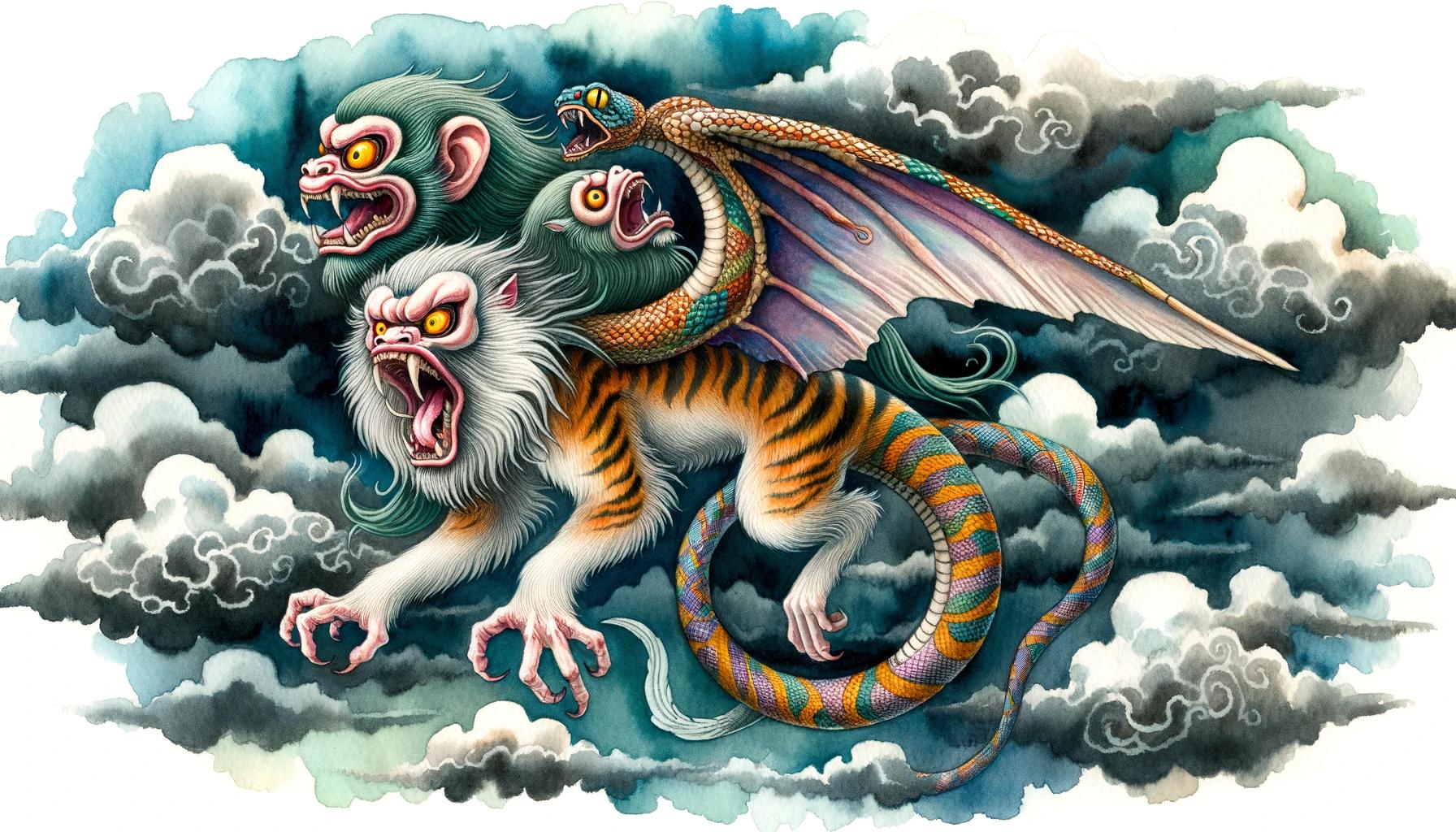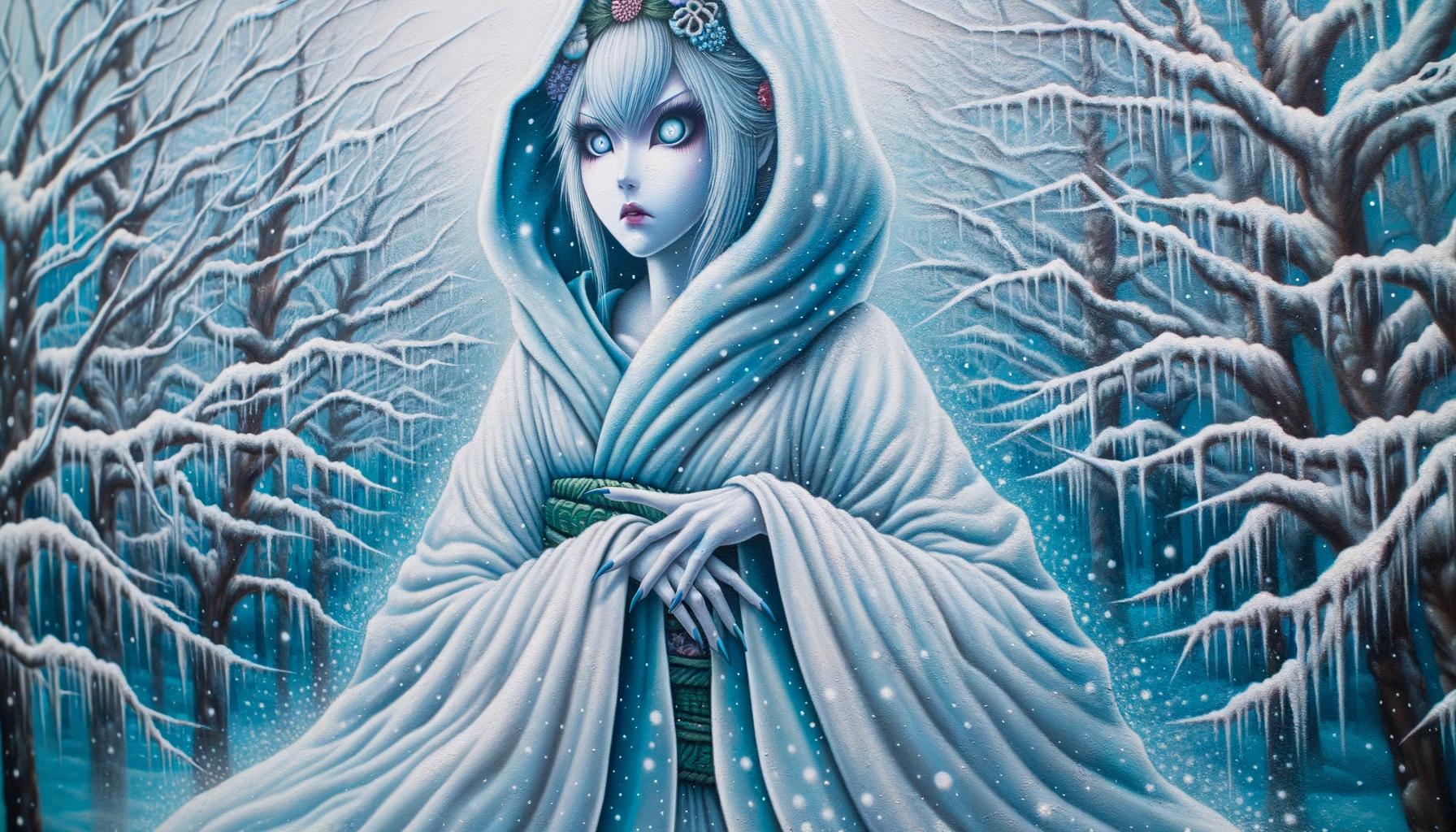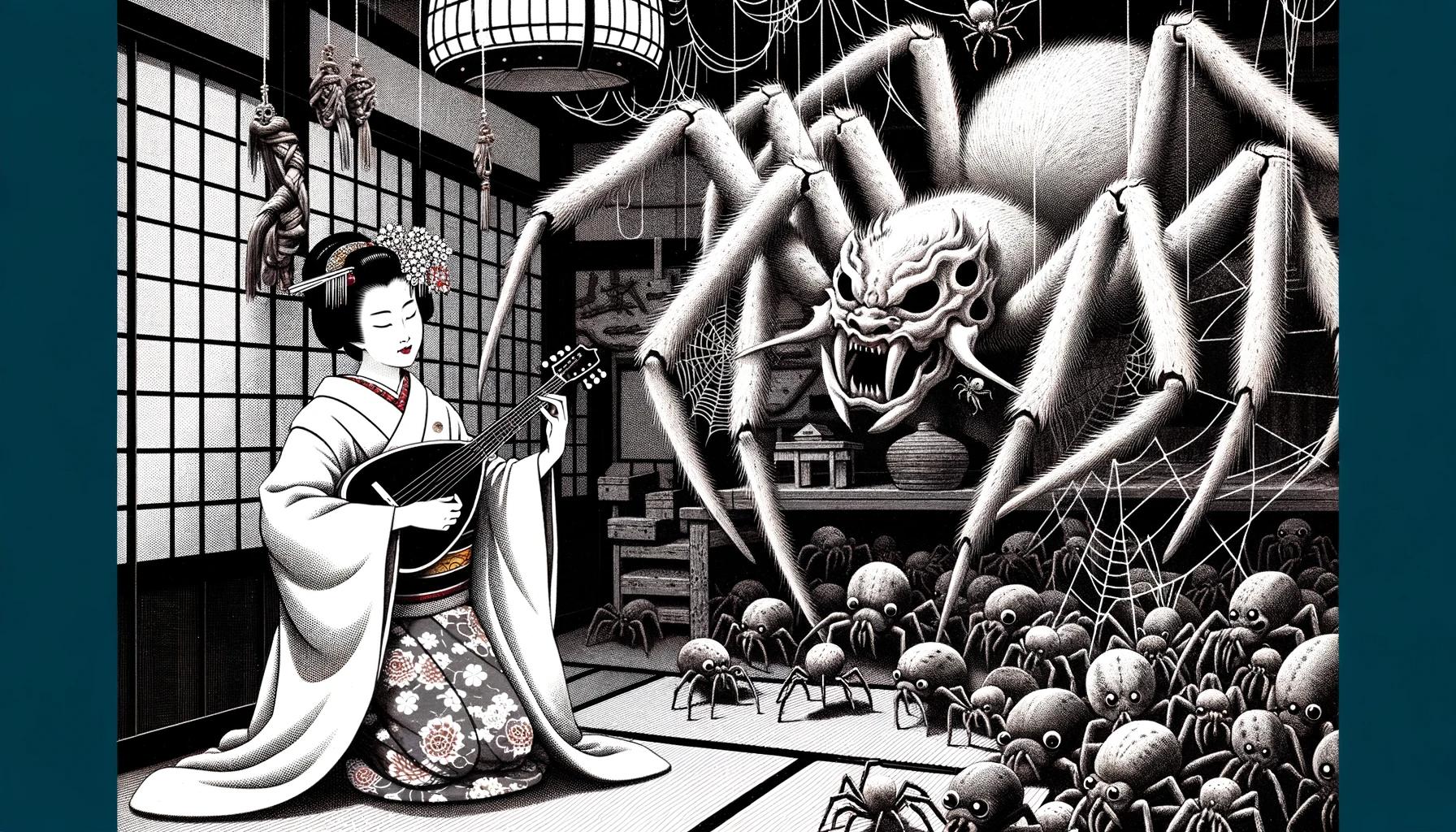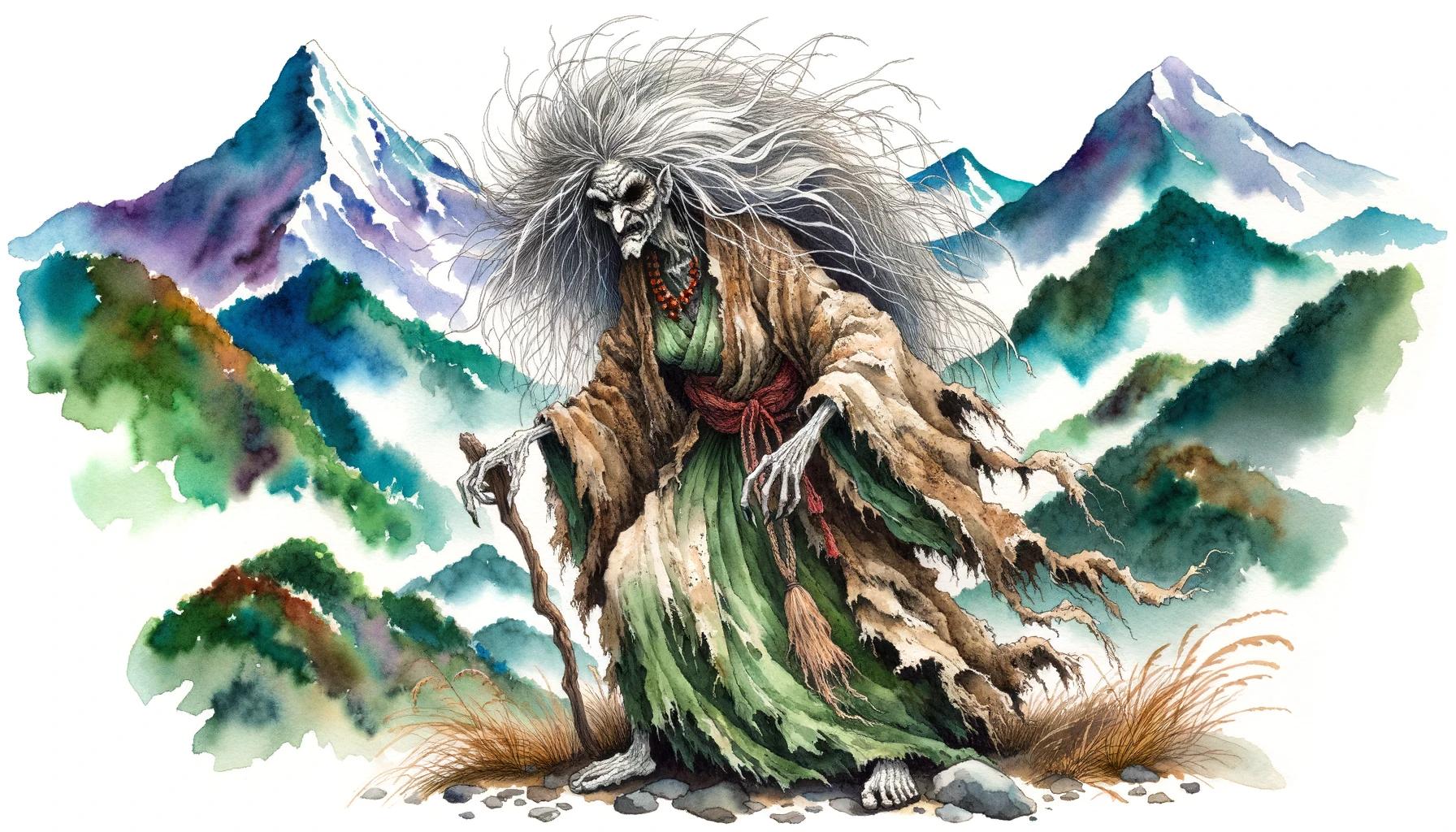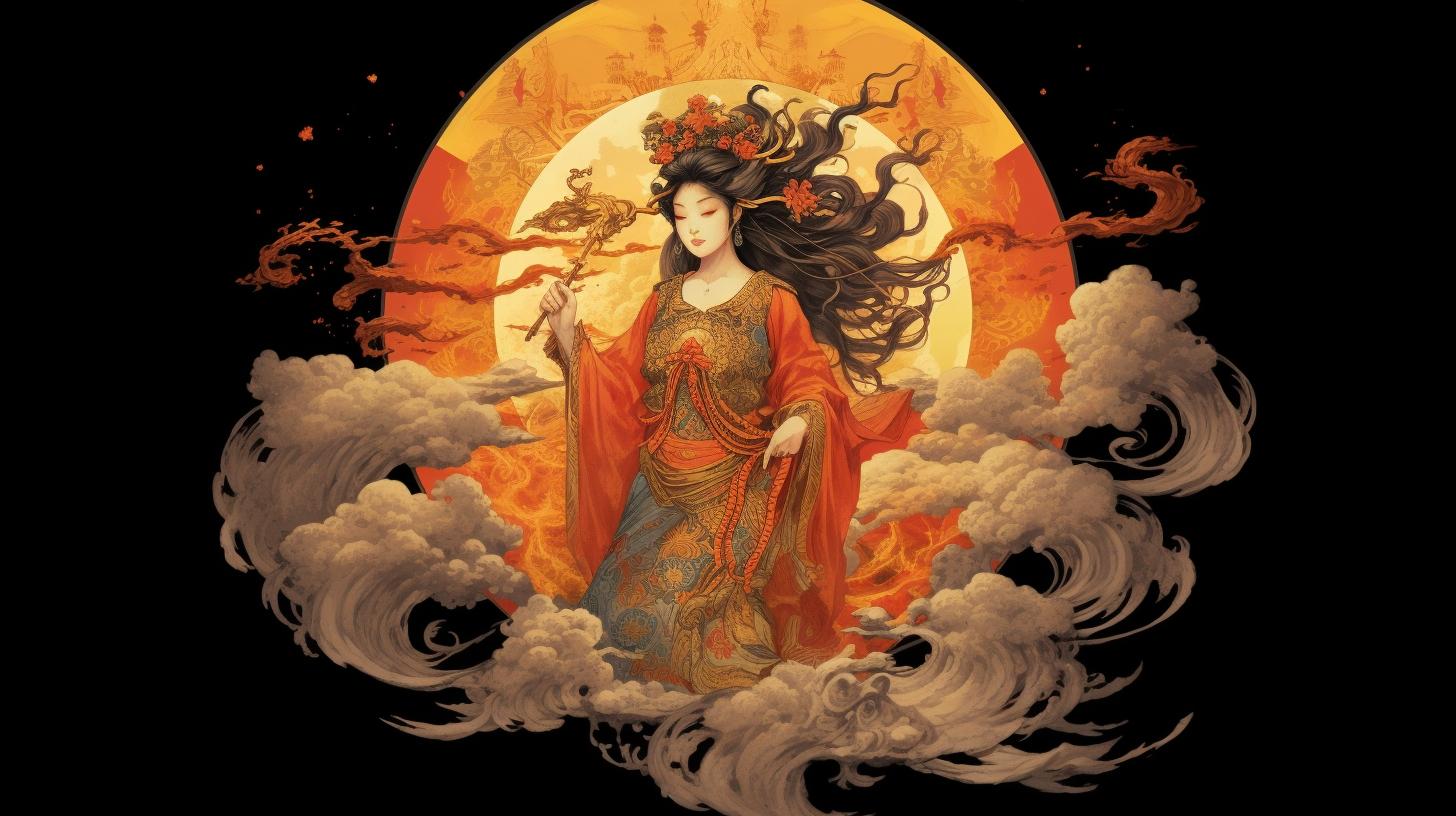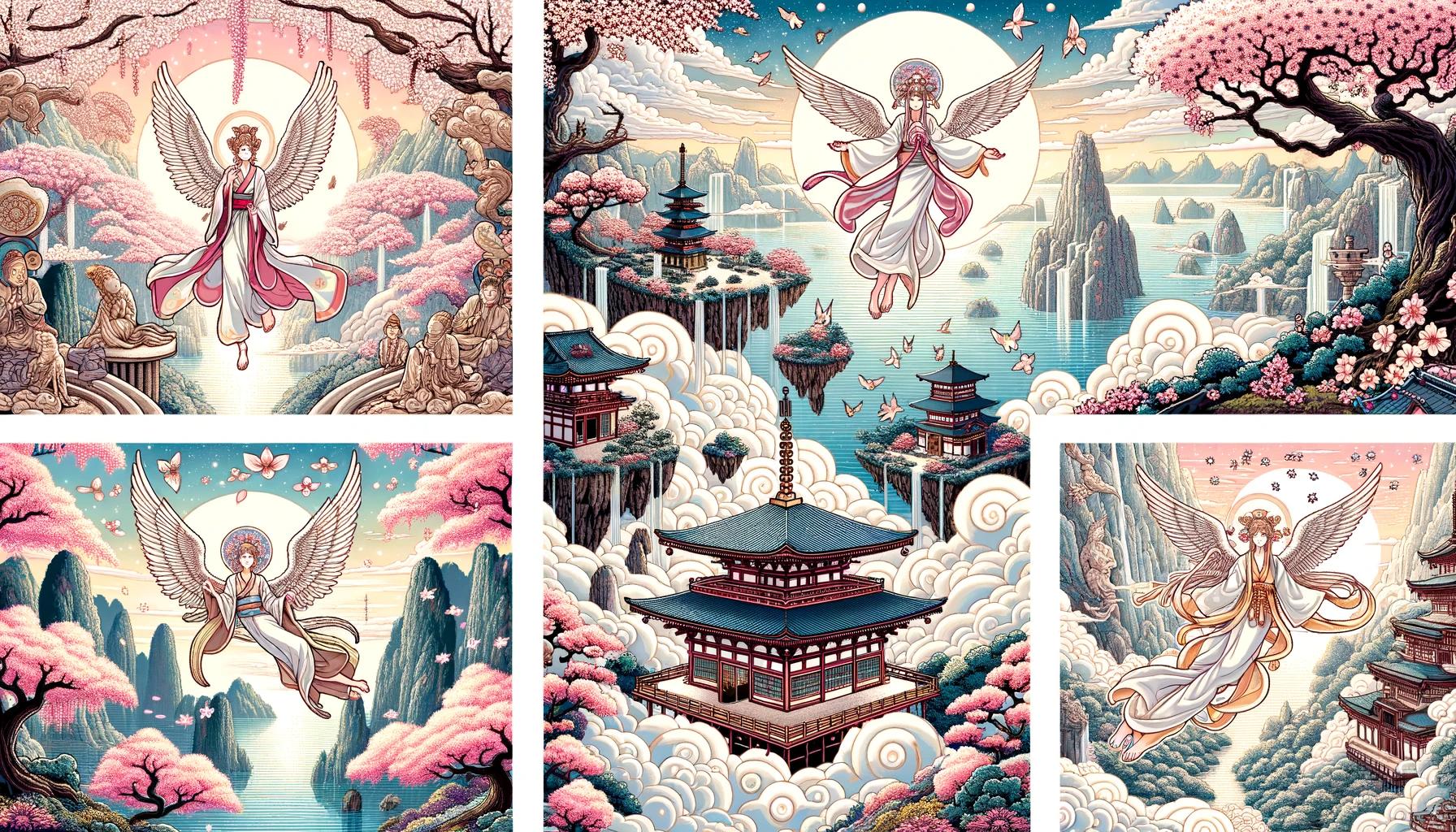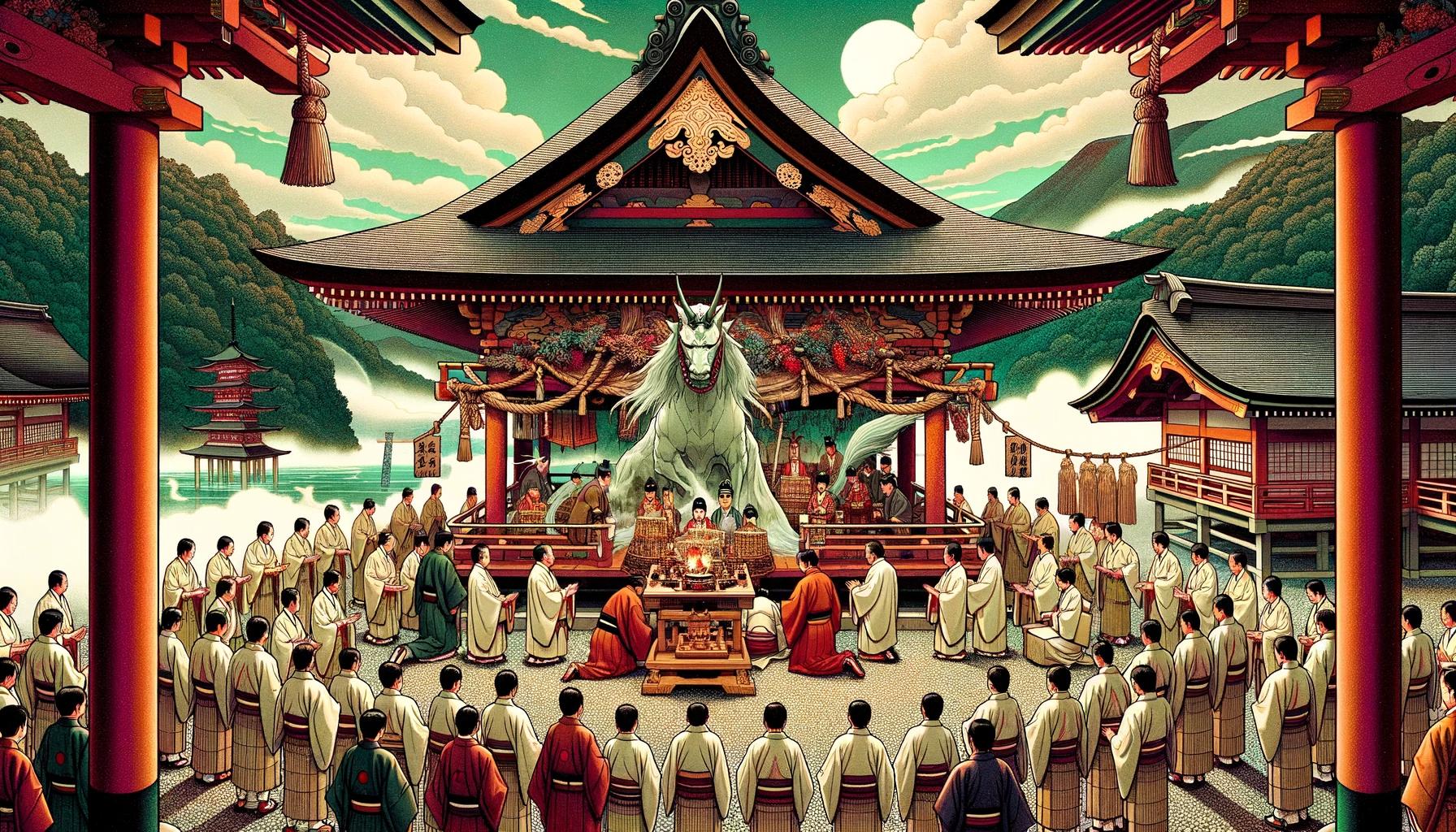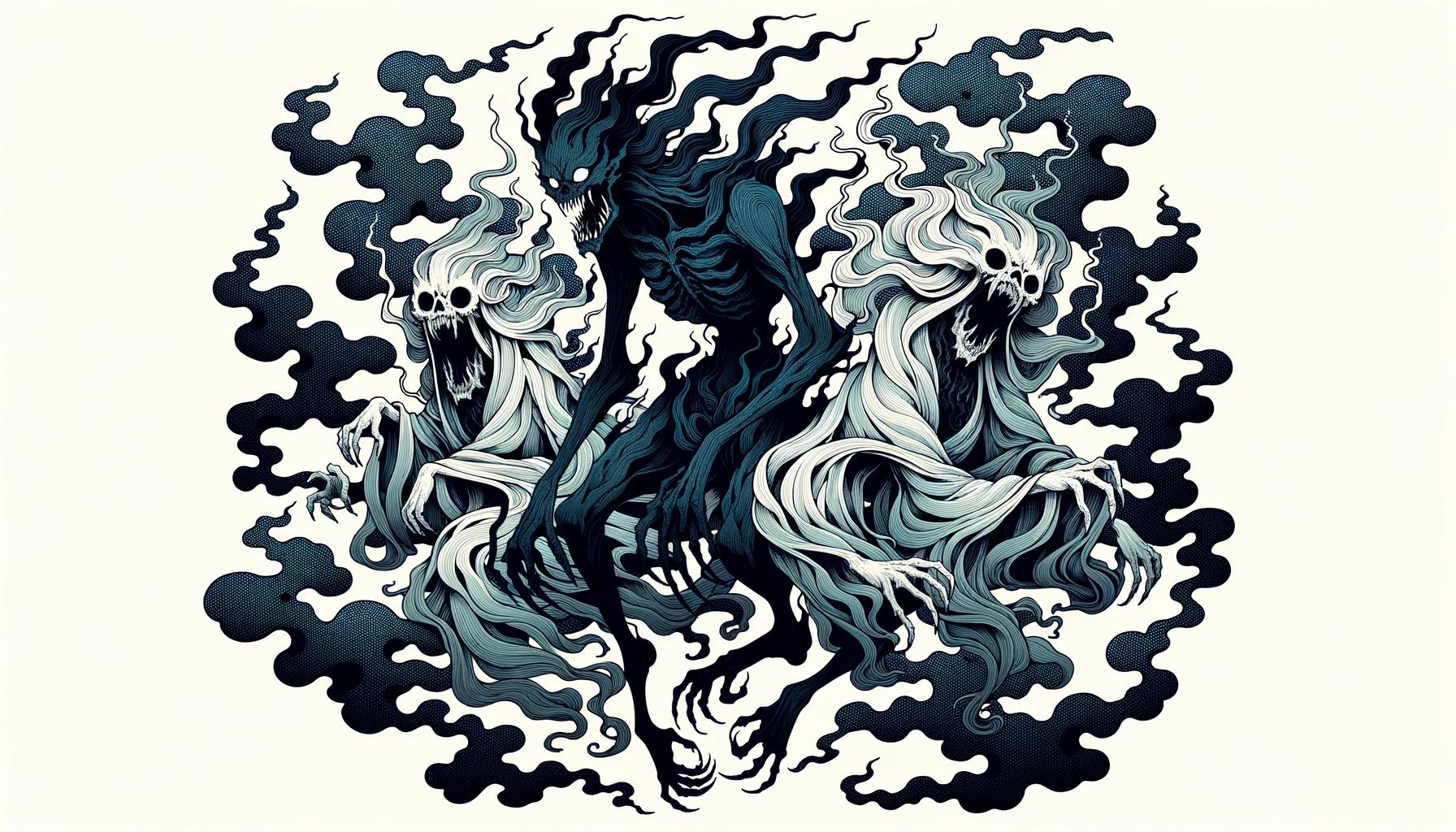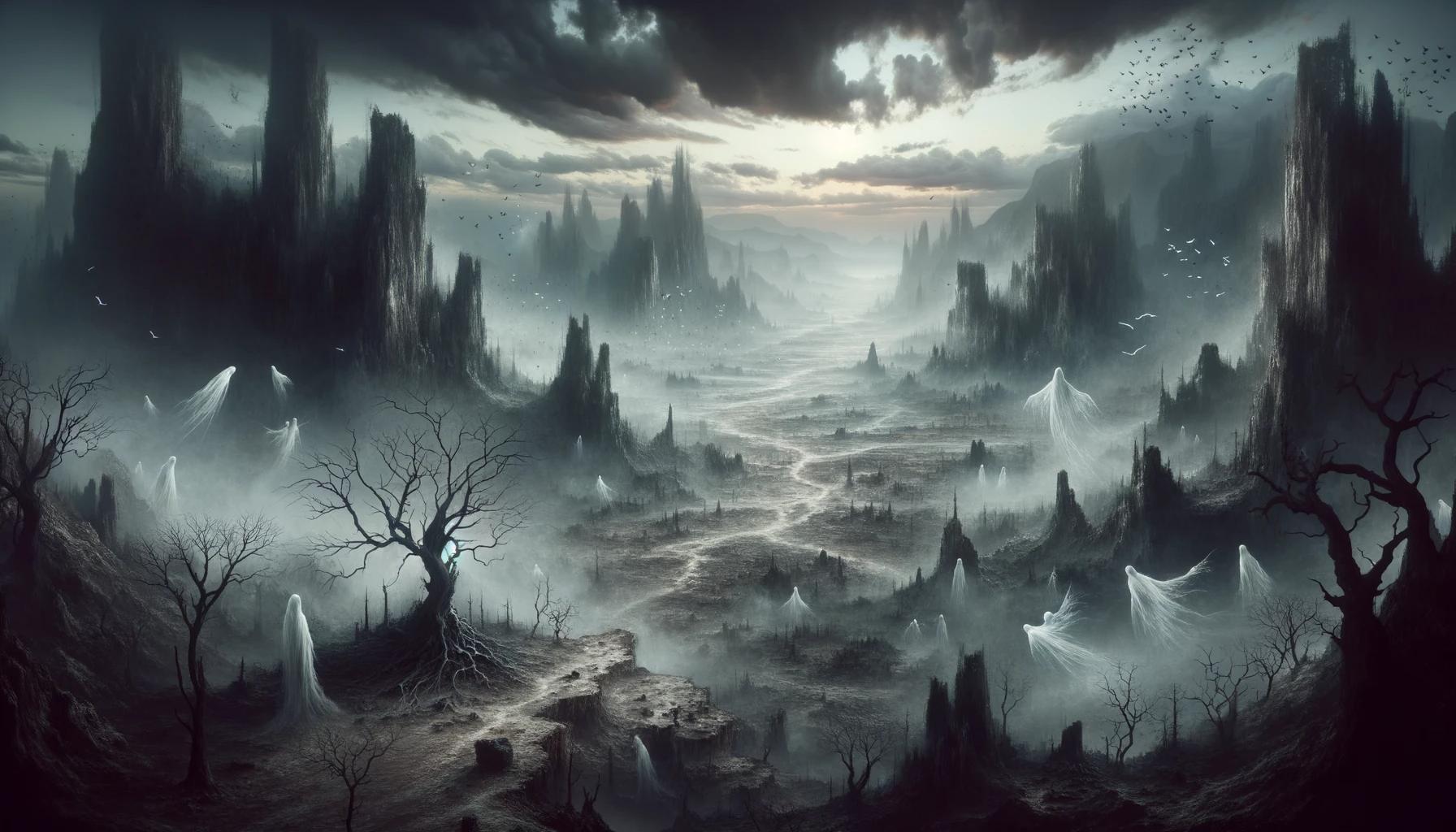Nue Yokai: The Legendary Chimeric Creature of Japanese Folklore
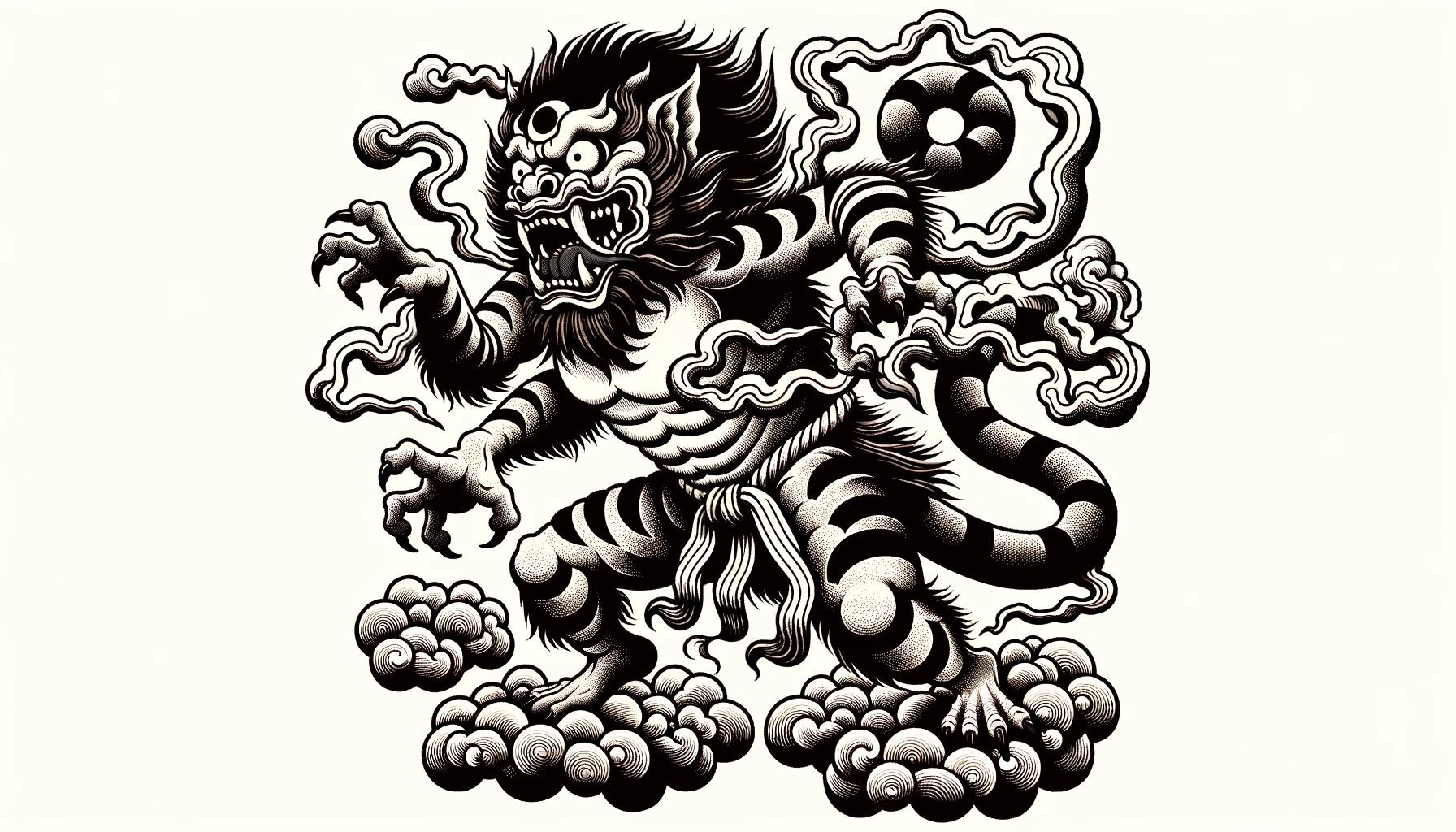
The Nue Yokai is a legendary creature from Japanese folklore, known for its chimeric appearance and association with misfortune. Its origins and significance in Japanese culture remain mysterious, as sightings of Nue Yokai have been rare throughout history.
One famous legend recounts its attack on the emperor in Kyoto, which led to a heroic battle and its ultimate defeat. The aftermath of its demise sparked fear and superstitions, with tales of curses and transformations associated with its corpse.
Nue Yokai has also made appearances in art, literature, and popular culture, captivating the imagination of many.
The Legend of Nue Yokai
The Nue Yokai is a legendary creature deeply rooted in Japanese folklore, captivating the imaginations of generations with its enigmatic nature and tales of misfortune. This mythical being holds a significant place in Japanese legends and traditions, intriguing scholars and enchanting enthusiasts.
Origins and Significance in Japanese Folklore
The origins of the Nue Yokai remain veiled in mystery, adding to the allure surrounding this creature. It is believed to have emerged from ancient Japanese folktales, where it gained prominence as a fearsome and malevolent entity.
The cultural significance of the Nue Yokai lies in its role as a symbol of supernatural power and as a harbinger of misfortune.
Description and Characteristics of Nue Yokai
- The Nue Yokai possesses a chimeric appearance, combining elements of different creatures to create a unique and unsettling form.
- Its head resembles that of a monkey, while its body resembles that of a tanuki.
- The Nue Yokai is further characterized by a serpent’s tail and the limbs of a tiger.
- Though its eerie call was once associated with nocturnal birds, its physical attributes firmly establish it as a Japanese chimera.
These distinct characteristics have solidified the Nue Yokai’s place among the most ancient recorded yokai, leaving a lasting imprint in Japanese folklore and popular culture.
The Nue Yokai’s reputation is tinged with an air of malevolence, as encounters with this creature have often resulted in disastrous consequences for those unlucky enough to cross its path.
These legends serve as cautionary tales, warning against the dangers of meddling with supernatural beings.
Join us as we delve deeper into the mysterious world of the Nue Yokai, exploring its elusive behaviors, famous legends, and cultural depictions that continue to captivate audiences worldwide.
Mysterious Behaviors and Sightings
The Nue Yokai is known for its elusive nature and rare encounters, adding to its air of mystery. Due to its scarcity, sightings of the Nue Yokai have been infrequent throughout history, contributing to its enigmatic reputation.
The creature seems to prefer staying hidden, rarely revealing itself to human observers.
Elusive Nature and Rare Encounters
The Nue Yokai’s preference for secrecy makes it challenging to study or document its behavior accurately. Tales of encounters with the Nue Yokai are limited, with only a handful of reported sightings.
Witnesses describe fleeting glimpses of the creature in the night sky, often accompanied by dark clouds, amplifying its aura of mystique. Its ability to remain undetected for extended periods reinforces the belief that the Nue Yokai possesses a remarkable ability to stay hidden.
Nue Yokai’s Association with Misfortune and Malevolence
The Nue Yokai is intrinsically linked to misfortune and malevolence in Japanese folklore. Its appearance in the vicinity of humans has been associated with calamities, illnesses, and other disastrous events.
While the exact reasons for these negative consequences remain unknown, the Nue Yokai’s presence is believed to bring about chaos and suffering.
Legends depict encounters with the Nue Yokai resulting in disastrous outcomes for those unfortunate enough to cross its path.
These encounters have been described as terrifying and catastrophic, leaving lasting effects on the lives of those involved. The malevolent nature of the Nue Yokai further solidifies its reputation as a fearsome and dangerous entity.
Despite its scarcity, the association with misfortune and malevolence has made the Nue Yokai a subject of intrigue and fear throughout Japanese history. Its mysterious behaviors and potential implications continue to captivate the imagination, leaving a lasting impression on those who delve into the folklore surrounding this legendary creature.
Famous Nue Yokai Legends
The Nue Yokai has left a lasting mark on Japanese folklore, with its infamous tales of malevolence and encounters with humans. Two of the most well-known legends involving the Nue Yokai are the Attack on the Emperor in Kyoto and the Heroic Battle and Defeat of Nue Yokai.
Attack on the Emperor in Kyoto
In the summer of 1153, the Emperor Konoe of Kyoto began experiencing relentless nightmares, which eventually led to a severe illness.
Despite various attempts, including medicine and prayers, his condition showed no signs of improvement. The emperor and his court suspected an evil spirit was haunting the palace every night.
The situation reached a climax when a fierce storm suddenly enveloped the imperial palace.
Fearing for his life, the emperor called upon the legendary samurai Minamoto no Yorimasa to confront the malevolent spirit menacing the palace. Armed with an ancestral arrow passed down from Minamoto no Yorimitsu, Yorimasa embarked on a perilous mission to face the nefarious Nue Yokai.
Under the cover of darkness, a mysterious wind swept through the air, accompanied by foreboding black clouds.
Yorimasa took aim at the swirling clouds above the palace and unleashed his arrow. A horrifying scream resonated through the night as the Nue Yokai plummeted from the sky. Yorimasa’s companion, I no Hayata, swiftly dealt the final blow to the fallen creature.
The defeat of the Nue Yokai marked the turning point in the emperor’s recovery, saving him from an unknown torment.
The Heroic Battle and Defeat of Nue Yokai
The heroic battle between Minamoto no Yorimasa and the Nue Yokai has become the stuff of legend. Their clash in the skies above Kyoto revealed the true power and determination of the samurai against the malevolence of the Nue Yokai. Yorimasa’s expertise with his inherited arrow, coupled with Hayata’s unwavering support, proved instrumental in their victory.
After the defeat of the Nue Yokai, the emperor rewarded Yorimasa and Hayata for their valor. They were bestowed the legendary katana Shishiō as a token of gratitude for their service.
The battle against the Nue Yokai and its subsequent defeat solidified Yorimasa’s place in history as a legendary samurai, forever linked to this awe-inspiring tale.
These legends of the Nue Yokai’s attack on the emperor and the heroic battle and defeat showcase the significance of this enigmatic creature in Japanese folklore.
The tales resonate as testaments to the power, bravery, and perseverance of those who stood against the forces of evil, leaving an indelible mark on the cultural and historical fabric of Japan.
Aftermath and Curse
After the defeat of the Nue Yokai, the aftermath left a lasting impact on the people of Kyoto. Fear and superstitions surrounding its corpse spread like wildfire, as the locals believed that the creature’s death may bring forth a curse.
Rumors circulated about the spirit seeking revenge, causing misfortunes and illness to befall those who had encountered the Nue Yokai.
Fear and Superstitions Surrounding Nue Yokai’s Corpse
The corpse of the Nue Yokai became a subject of both terror and fascination. The locals feared that disturbing or mishandling the remains could unleash a wave of calamities upon Kyoto.
As a result, the corpse was treated with utmost caution and respect, and various measures were taken to ensure its proper disposal. According to one legend, the lifeless body was placed on a boat, sent down the Kamo River, and eventually floated into the sea, far away from the city.
Superstitious beliefs also arose, suggesting that the curse of the Nue Yokai could be absorbed or transmitted through any contact with its remains. People avoided discussing the creature, and the mere mention of its name was considered bad luck.
These fears and superstitions persisted for generations, leaving an indelible mark on the collective consciousness of the locals.
Transformations and Other Legends Associated with Nue Yokai
The defeat and death of the Nue Yokai did not mark the end of its legacy. Various legends emerged, intertwining the creature with other mystical entities and transformations. One such tale tells of the Nue Yokai’s spirit taking the form of a horse named Kinoshita, which was said to have been stolen by Taira no Munemori and later used by Minamoto no Yorimasa to wage a battle against the Taira clan.
Additionally, there are accounts suggesting that the Nue Yokai may have represented the vengeful spirit of Yorimasa’s mother. It is believed that her intense prayers and deep-seated hatred towards the Taira family resulted in her transformation into the fearsome yokai.
- Legends of the Nue Yokai’s curse and its potential retribution
- Connection to the vengeful spirit of Yorimasa’s mother
- The transformation of the Nue Yokai’s spirit into a horse, Kinoshita
These captivating legends and tales surrounding the Nue Yokai further emphasized its significance and cemented its place in Japanese folklore.
Cultural Depictions and Presence in Media
Cultural depictions of the Nue Yokai have found their way into various forms of media, including art, literature, anime, and popular culture. The captivating nature of this mythical creature has inspired numerous artists, scholars, and creators to explore its intriguing existence.
Artistic Representations by Notable Artists and Scholars
The Nue Yokai has been the subject of artistic interpretations by renowned artists and scholars. Notable among them is Toriyama Sekien, a prominent Japanese artist known for his intricate yokai illustrations.
His depictions have brought the Nue Yokai to life, showcasing its chimeric features and mystical aura.
Other artists and scholars such as Kunio Yanagita, Shigeru Mizuki, and Sūshi Sawaki have also contributed to the body of work dedicated to yokai, including the Nue Yokai. Their contributions include detailed studies, research, and artistic renditions that delve into the folklore and mythology surrounding this intriguing creature.
Nue Yokai in Literature, Anime, and Popular Culture
The Nue Yokai has made its mark in various forms of literature, anime, and popular culture, captivating audiences with its mysterious allure. In literary works, it often appears as a formidable antagonist or a mystical creature that adds an air of suspense and danger to the narrative.
Anime enthusiasts may recognize the Nue Yokai in popular series like One Piece and Inuyasha. In One Piece, the character Toratsugu possesses the ability to transform into a Nue Yokai, showcasing its mystical powers and unique characteristics.
Meanwhile, in Inuyasha, a similar creature named Meiohju possesses supernatural abilities, further cementing the role of the Nue Yokai in exciting storylines.
These appearances in literature, anime, and popular culture contribute to the enduring fascination surrounding the Nue Yokai, allowing it to reach a wider audience and continue to captivate the imagination of people across different mediums.
Frequently Asked Questions about Nue Yokai
What is the origin of the name ‘Nue’?
The exact translation of the name ‘Nue’ in English is uncertain, but it is believed to connote ‘night’ and ‘bird’ or ‘ave’ in Japanese. The name holds significance in Japanese folklore, representing a mysterious and elusive creature that has captured the imaginations of many.
Are there any known habitats or preferred environments for Nue Yokai?
The exact habitat of the Nue Yokai remains unknown, as it has only been sighted in the sky accompanied by dark clouds. Although specific environments or locations are not known, it is often associated with nighttime and appears to have a preference for nocturnal activities.
What are the typical characteristics and physical features of Nue Yokai?
The Nue Yokai is described as one of the oldest recorded yokai, featuring the head of a monkey, the body of a tanuki, the tail of a snake, and the limbs of a tiger.
Its physical appearance is that of a mythical chimeric creature, combining various animal attributes in a unique and enigmatic manner.
Is Nue Yokai considered dangerous to humans?
Based on limited encounters throughout history, it is believed that Nue Yokai is a creature associated with malevolence and misfortune. When humans have come into contact with it, the consequences have often been disastrous.
Its enigmatic nature and potential for harm have solidified its reputation as a potentially dangerous entity.
How did the defeat of Nue Yokai impact Japanese folklore and history?
The defeat of Nue Yokai holds a significant place in Japanese folklore and history. The legendary battle between the Nue Yokai and the famous samurai Minamoto no Yorimasa, resulting in the creature’s demise, became an iconic tale.
This event contributed to the mythology surrounding Yokai creatures, inspiring numerous artistic representations and leaving a lasting impact on Japanese cultural heritage.
Additional Yokai and Folklore Related to Nue Yokai
Within Japanese folklore, there are numerous other fascinating creatures and yokai that share connections with the Nue Yokai. These supernatural beings further enrich the mythical world of Japanese folklore and add depth to the lore surrounding the Nue.
Let’s explore some of these similar creatures and their intriguing connections:
Similar Creatures and Yokai in Japanese Folklore
Japanese folklore is teeming with a wide array of mystical creatures and yokai, many of which bear resemblances or share qualities with the Nue Yokai. Here are a few notable examples:
- Kitsune: These shapeshifting fox spirits often possess intelligence and magical abilities.
They share the Nue Yokai’s association with transformation and mischief.
- Tengu: Often depicted as bird-like creatures with human-like features, Tengu are known for their supernatural powers, including flying and shape-shifting.
They, too, have a connection to the Nue through their association with avian characteristics.
- Tanuki: These mischievous creatures, also known as raccoon dogs, possess shape-shifting abilities and are associated with both good fortune and trickery.
They share the Nue Yokai’s transformative traits.
Nue Yokai’s Connection to Other Legendary Yokai and Entities
Beyond the realm of similar creatures, the Nue Yokai also holds intriguing connections to other renowned yokai and legendary entities. These connections highlight the interwoven nature of Japanese folklore. Here are a couple of notable examples:
- Taira no Masakado: This legendary samurai and rebel leader is believed to have transformed into a powerful yokai after his death.
Some tales suggest a connection between Taira no Masakado and the Nue Yokai, emphasizing the intricate web of folklore and the potential intertwining of their stories.
- Orochi: A prominent creature in Japanese mythology, Orochi is a fearsome eight-headed serpent.
While distinct in appearance, the Nue Yokai and Orochi share a connection through their representation of powerful and malevolent forces, captivating the imaginations of storytellers and artists alike.
This rich tapestry of similar creatures and interconnected legends highlights the vibrant and intricate world of Japanese folklore.
Exploring these connections helps us delve deeper into the mysterious realms of mythical creatures and the enduring fascination they hold in the cultural fabric of Japan.
.

